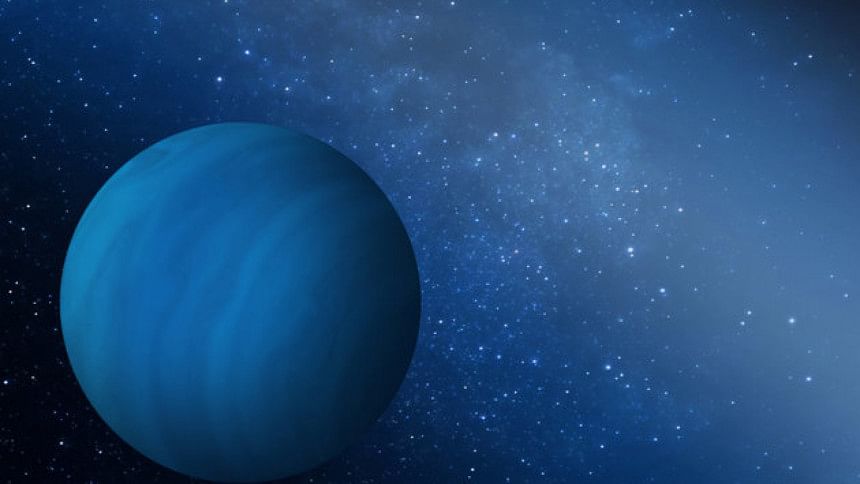Our solar system may have had a fifth 'Giant' planet

The four gas giant planets in our solar system -- Jupiter, Saturn, Uranus, and Neptune -- may have a long-lost relative. According to a new study, our system was once home to a fifth gas giant that suddenly vanished some 4 billion years ago after a run-in with Neptune, reports Huffington Post.
Indirect evidence for this lost world is seen in a strange cluster of icy objects -- called the "kernel" – in the Kuiper Belt. That's the vast region of primordial debris that encircles the sun beyond the orbit of Neptune.
"The Kuiper Belt is a perfect clue to understanding how the solar system evolved since its formation," study author Dr. David Nesvorny, an astronomer at the Southwest Research Institute in Boulder, Colo., told New Scientist.
For the study, Nesvorny created computer simulations of Neptune and the "kernel" cluster as they were 4 billion years ago in the early solar system.
At the time, the cluster is believed to have been in Neptune's gravitational grasp. But then, according to the simulations, something happened to cause the cluster to escape Neptune's gravitational pull -- placing the cluster and Neptune in their present locations.
This is where the lost planet comes in: the simulations suggest that it must have been another gas giant that bumped Neptune and caused it and the "kernel" to part ways.
"The location and magnitude of Neptune's jump obtained in this model matches quite nicely the pattern that is needed for the formation of the 'kernel,'" Nesvorny told The Huffington Post in an email.
And according to the simulations, the planet couldn't have been one of the worlds currently in our solar system. The mysterious planet may have been ejected from the solar system after encountering Neptune.
In 2011, Nesvorny authored a previous study -- which involved thousands of computer simulations -- that suggested that the best way to explain the current orbits of the solar system's four giant planets was to include a missing fifth planet.
"I tend to believe that it may be very difficult to find any evidence for the fifth planet," Nesvorny said in the email. "I started looking into [the] formation of the Kuiper Belt, because I was worried that the orbital structures seen there are inconsistent with my model. Now I realized that the opposite may be true. It was certainly a surprise."
What do other scientists think of Nesvorny's new study?
"What Nesvorny's models are doing is being very self-consistent and getting multiple structures right at once, which is really quite amazing," Dr. J.J. Kavelaars, an astronomer at the Dominion Astrophysical Observatory in Victoria, British Columbia, who was not involved in the research, told Science magazine.

 For all latest news, follow The Daily Star's Google News channel.
For all latest news, follow The Daily Star's Google News channel. 



Comments